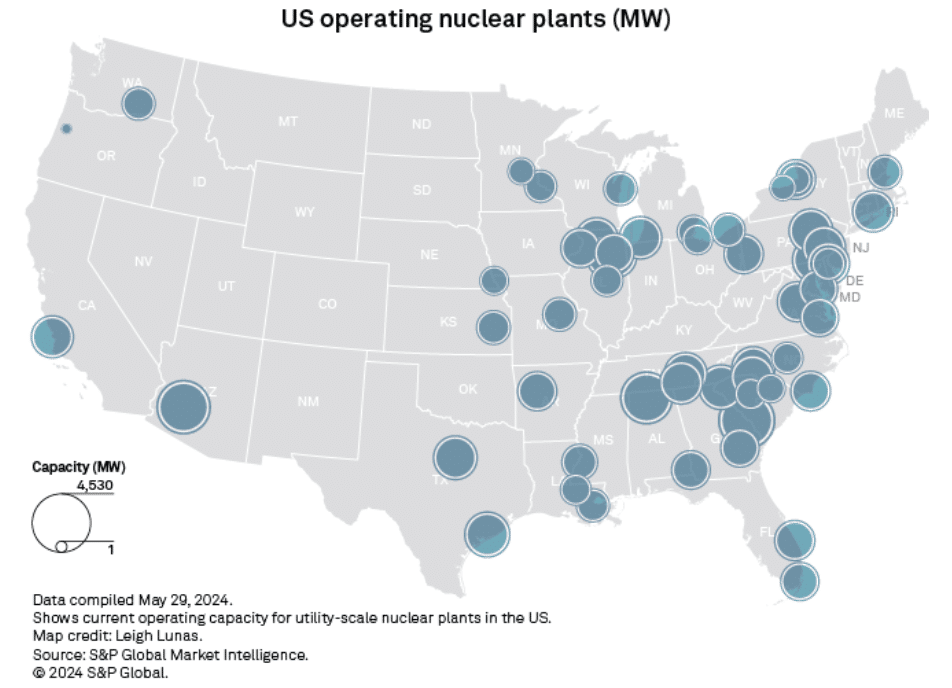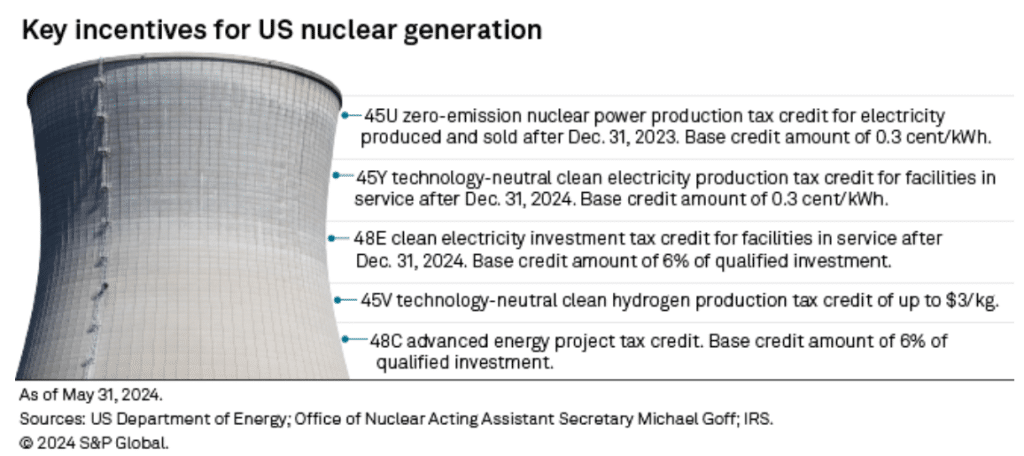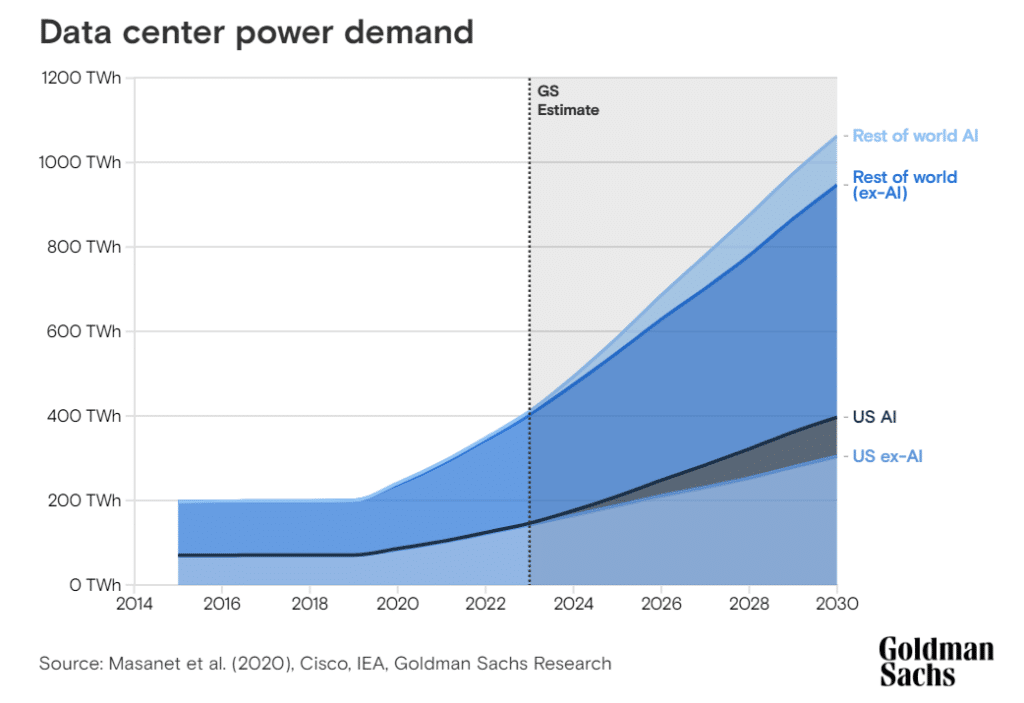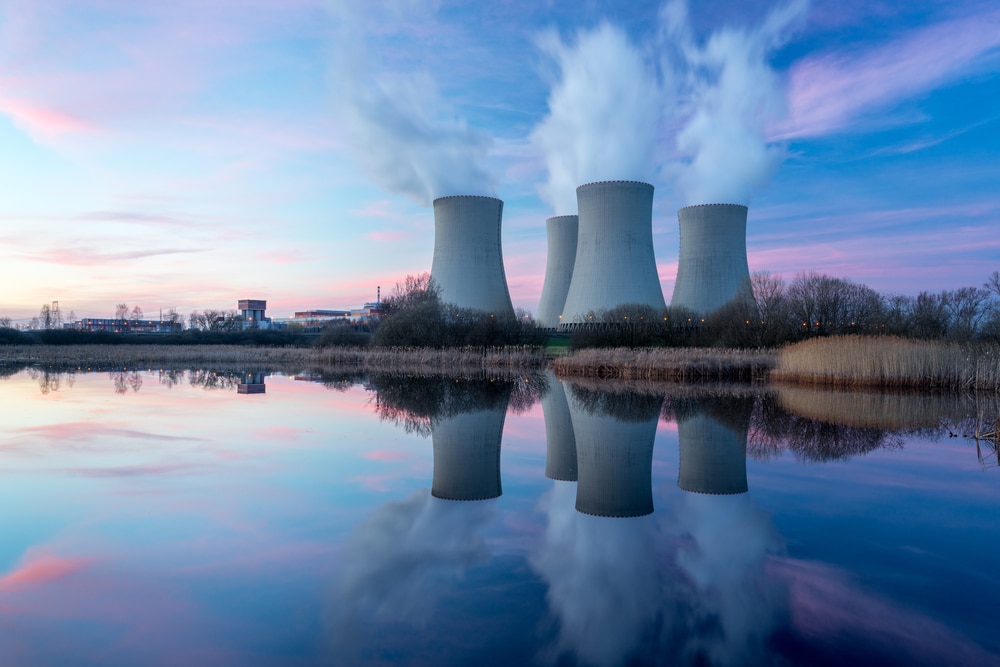With rising energy demands, nuclear power is gaining attention as a key component of the US’s carbon-free energy strategy. The US Energy Department (DOE) aims to triple nuclear capacity by 2050, adding 200 gigawatts (GW) to meet net zero emissions goals.
Michael Goff, acting assistant secretary of the DOE’s Office of Nuclear Energy, emphasizes the urgency of this expansion, noting that:
“We are serious. We need to start deploying now.”
Meeting Rising Energy Demands with Nuclear Power
Large-load customers like data centers and manufacturing are driving increased demand for carbon-free power, potentially steering utilities toward nuclear energy, per S&P Global report.
Matt Crozat from the Nuclear Energy Institute (NEI) notes a significant rise in utility interest, particularly among those with existing nuclear fleets.
Last month, the largest nuclear power operator in the country, Constellation Energy Corporation, revealed plans to explore the construction of new nuclear capacity at its reactor sites to address the rising energy demand of its data center clients.
However, despite growing interest, the initial investment risk for new nuclear projects remains a significant hurdle. Lynn Good, CEO of Duke Energy Corp., stresses the need for federal incentives to mitigate construction risks.
Currently, federal support largely comes in the form of post-construction tax credits, which require operational plants to benefit. Good advocates for more robust support during the construction phase to balance the benefits and risks for consumers.

The completion of two new reactors at Georgia’s Vogtle Nuclear Plant, adding over 2,000 megawatts (MW), has sparked optimism. Georgia Gov. Brian Kemp and other officials argue that this project proves new nuclear construction is feasible in the US.
Energy Secretary Jennifer Granholm supports expanding the nuclear industry, suggesting more reactors should be planned, while also noting that:
“We are determined to build a world-class nuclear industry in the United States, and we’re putting our money where our mouth is.”
Balancing Investment Risks and Federal Incentives
However, Southern Company, which oversaw the Vogtle expansion, has no immediate plans for further reactors. Georgia Public Service Commission member Tim Echols underscores the need for federal backstops against cost overruns before approving additional units.
He believes that current incentives, including tax credits and loan guarantees, are insufficient, referencing the bankruptcy of Vogtle’s contractor, Westinghouse, which caused significant industry concern.

The DOE’s Goff acknowledges the challenge of increasing incentives further, noting the substantial existing support under the 2022 Inflation Reduction Act (IRA). This legislation offers multiple credits for new nuclear projects, including options to layer or sell credits and additional credits targeted at clean energy. These incentives have already helped secure lifetime extensions for existing nuclear plants.
Constellation Energy plans to renew operating licenses for all 23 of its reactors, with potential capacity increases qualifying for new capacity credits. This could lead to an additional 2.5 GW of nuclear capacity through uprates, according to NEI President Maria Korsnick.
The federal government is also promoting nuclear energy through public-private partnerships, cost-share projects, loan guarantees, licensing assistance, and research initiatives. The Biden-Harris administration has issued a $1.52 billion loan guarantee to restart an 800-MW nuclear plant in Michigan.
Nuclear Energy for the Nation’s Carbon-Free Power
The surge in AI applications is significantly increasing electricity demand for data centers, presenting a lucrative opportunity for developers of small nuclear reactors (SMRs) and advanced battery technologies.
According to a Goldman Sachs report, AI applications could boost data center power needs by 160%, with AI queries like those from ChatGPT requiring nearly ten times more electricity than typical Google searches.

Clayton Scott, chief commercial officer for NuScale Power, sees this as a perfect match for their small-scale nuclear systems. Scott believes the nuclear company can provide a solution with its SMRs, each generating 77 megawatts of carbon-free electricity.
However, these reactors won’t be deployed until late in the decade, pending regulatory approval. The company reported minimal revenue and significant losses as it gears up for commercial operations.
Microsoft, led by Bill Gates’ TerraPower, is also exploring SMRs for powering AI data centers. Other startups, such as Oklo and Helion, are developing innovative nuclear technologies, including fission reactors and nuclear fusion.
While much of the industry’s focus is on SMRs, none are yet commercially available for utility-scale power generation. Industry experts anticipate several applications for advanced reactors to be filed with the US Nuclear Regulatory Commission soon.
-
However, the recent cancellation of the first modular project in Idaho and Vogtle’s completion may shift financial risk assessments back toward larger reactors.
Large light-water reactors could become more prevalent in utility planning. Goff believes that there will still be demand for large-scale reactors.
Overall, the completion of Vogtle’s reactors and the supportive policy landscape indicate a growing openness to nuclear energy. As demand for carbon-free power continues to rise, nuclear power may play a crucial role in the US’s energy future, provided that policy adjustments and incentives keep pace with industry needs.

